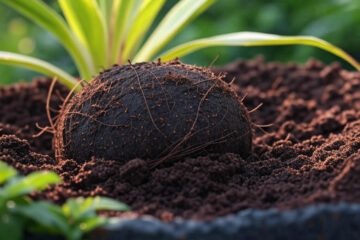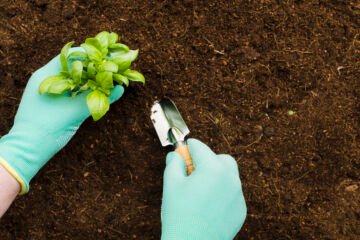
7 Remarkable Cocopeat Benefits
7 Remarkable Cocopeat Benefits That Will Transform Your Garden in 30 Days
Introduction
Are you struggling with poor plant growth despite your best gardening efforts? The secret to lush, thriving plants might be hiding in an eco-friendly growing medium you haven’t tried yet. Cocopeat, derived from coconut husks, has revolutionized how gardening enthusiasts approach plant care worldwide. This sustainable alternative to traditional soil amendments offers exceptional benefits that can dramatically improve your gardening success. As concerns about peat moss harvesting and environmental sustainability grow, cocopeat emerges as an eco-conscious choice that doesn’t compromise on performance. In this comprehensive guide, we’ll explore the remarkable advantages of incorporating cocopeat into your gardening routine and how this simple switch can transform your green space within just 30 days.
What Exactly Is Cocopeat?
Before diving into its benefits, let’s understand what cocopeat actually is. Also known as coco coir, cocopeat is a natural fiber extracted from the outer husk of coconuts. Previously considered a waste product in coconut processing, this fibrous material is now recognized as a valuable growing medium. After extraction, manufacturers process it into various forms including blocks, discs, and loose fiber, making it versatile for different gardening applications.
The transformation from agricultural byproduct to premium growing medium represents a significant advancement in sustainable gardening practices. Unlike peat moss, which takes centuries to form and is harvested unsustainably from sensitive bog ecosystems, cocopeat is rapidly renewable and helps reduce agricultural waste.
7 Exceptional Benefits of Cocopeat for Your Plants
1. Superior Water Retention Capabilities
Cocopeat can absorb and hold up to 8-10 times its weight in water, significantly outperforming traditional soil. This extraordinary water retention capacity creates several advantages:
- Reduces watering frequency by up to 40%
- Maintains consistent moisture levels around root zones
- Prevents water stress during hot periods
- Minimizes water runoff and nutrient leaching
Studies show that gardens using cocopeat-enriched soil require approximately 30% less irrigation water compared to conventional soil mixes, making it particularly valuable in drought-prone regions or for water-conscious gardeners.
2. Excellent Aeration for Healthier Root Development
Despite its impressive water retention, cocopeat doesn’t become waterlogged or compacted easily. Its unique fibrous structure creates an ideal balance of:
- Optimal air-filled porosity (20-30%)
- Efficient water drainage
- Stable structure that resists compaction
This perfect balance of air and water creates an ideal environment for root development. Plants grown in cocopeat-enriched media typically develop stronger, more extensive root systems with 25-35% more fine root hairs compared to conventional potting mixes.
3. pH-Balanced Growing Environment
With a naturally neutral to slightly acidic pH level (typically 5.5-6.8), cocopeat provides an ideal growing environment for most plants. This balanced pH:
- Enhances nutrient availability and uptake
- Reduces the need for pH adjustments
- Creates optimal conditions for beneficial microbial activity
- Supports a wider variety of plant species
Unlike peat moss, which is highly acidic (pH 3.5-4.5) and requires lime addition, cocopeat’s more balanced pH makes it immediately suitable for most garden applications without additional amendments.
4. Eco-Friendly and Sustainable Choice
As gardeners become increasingly environmentally conscious, cocopeat stands out as a responsible choice:
- 100% natural and biodegradable
- Made from renewable coconut byproducts
- Helps reduce agricultural waste
- Serves as an alternative to peat moss harvesting, which destroys sensitive bog ecosystems
The coconut industry produces approximately 85 million tons of husks annually, which can be converted into valuable growing media rather than becoming waste. By choosing cocopeat, you’re participating in sustainable resource utilization.
5. Pathogen and Weed-Free Growing Medium
Unlike traditional compost or topsoil, quality cocopeat undergoes processing that naturally eliminates:
- Harmful pathogens
- Weed seeds
- Pests and their eggs
- Fungal spores
Professional studies indicate that seedlings grown in sterilized cocopeat show 40-60% lower incidence of damping-off disease compared to conventional soil mixes. This cleanliness makes cocopeat particularly valuable for seed starting and propagation projects.
6. Extended Lifespan and Reusability
Cocopeat’s exceptional durability sets it apart from many other growing media:
- Breaks down much slower than traditional compost
- Maintains its structure for multiple growing seasons
- Can be rehydrated and reused for subsequent plantings
- Gradually improves soil structure as it slowly decomposes
With proper management, cocopeat can remain effective in container gardens for 2-3 years before requiring replacement, compared to conventional potting mixes that often need annual refreshing.
7. Versatility Across Growing Applications
Few growing media match cocopeat’s remarkable versatility:
- Ideal for container gardening and raised beds
- Perfect for seed starting and propagation
- Excellent for hydroponic and aquaponic systems
- Valuable soil amendment for in-ground gardens
- Suitable for both indoor and outdoor plants
This adaptability makes cocopeat a one-stop solution for various gardening needs, simplifying your gardening supply purchasing and storage.
Addressing Common Questions About Cocopeat
Does cocopeat contain enough nutrients for plants?
While cocopeat provides excellent physical growing conditions, it contains minimal nutrients on its own. For optimal results:
- Combine with compost for organic gardening
- Add balanced fertilizer when using pure cocopeat
- Consider pre-fertilized cocopeat products for convenience
- Implement regular feeding schedule for long-term container plantings
How do I prepare cocopeat for use?
Most commercial cocopeat comes compressed and requires rehydration:
- Place the cocopeat block in a large container
- Add warm water gradually (typically 5-6 liters per 650g block)
- Allow 15-30 minutes for complete expansion
- Break apart any remaining clumps for even texture
- Drain excess water before use
Is cocopeat suitable for all plant types?
While excellent for most plants, some considerations exist:
- Particularly beneficial for moisture-loving plants like ferns and tropical species
- May need additional grit for succulents and cacti
- Excellent for acid-loving plants like blueberries and azaleas
- May require calcium supplementation for fruiting vegetables
How does cocopeat compare cost-wise to traditional potting soil?
The initial investment in quality cocopeat may be 15-25% higher than basic potting soil, but its benefits provide excellent return on investment through:
- Reduced water usage
- Lower fertilizer runoff
- Extended replacement intervals
- Improved plant performance
- Reduced plant loss from water stress
Conclusion: Is Cocopeat Right for Your Garden?
The evidence clearly demonstrates that cocopeat offers significant advantages for both novice and experienced gardeners. Its exceptional water retention, perfect aeration, neutral pH, and eco-friendly profile make it a superior choice for modern sustainable gardening. The initial investment quickly pays dividends through healthier plants, reduced resource usage, and simplified garden maintenance.
Whether you’re growing prized orchids, nurturing vegetable seedlings, or maintaining container gardens, incorporating cocopeat into your gardening practice represents a simple yet profound improvement. As environmental concerns continue to influence gardening choices, cocopeat stands as a shining example of how agricultural byproducts can be transformed into valuable resources that benefit both plants and planet.
Ready to transform your garden? Give cocopeat a try in your next planting project and witness the remarkable difference it can make in just 30 days. Your plants—and the environment—will thank you.



